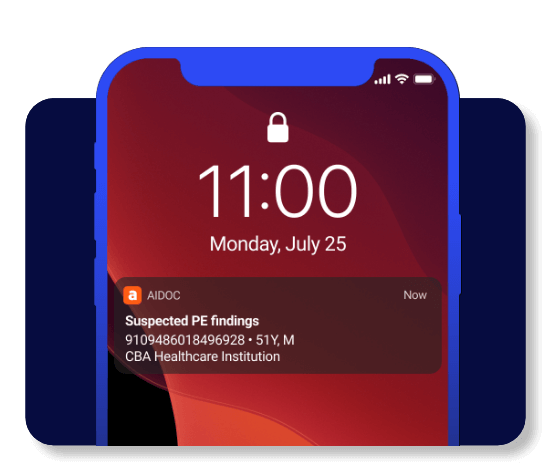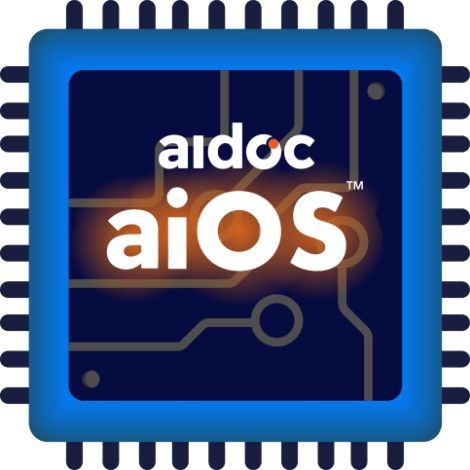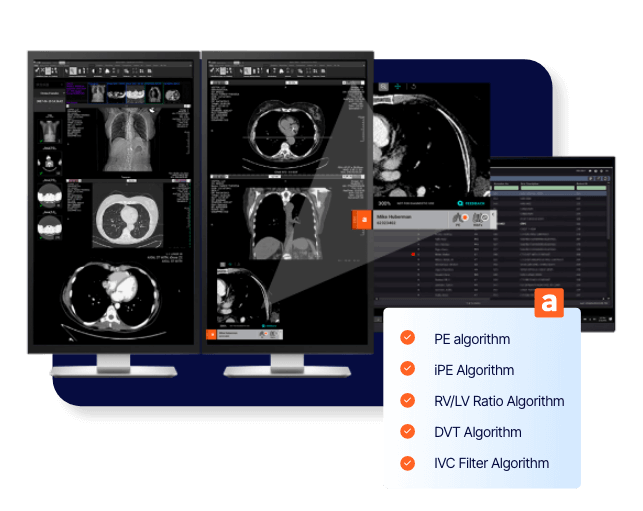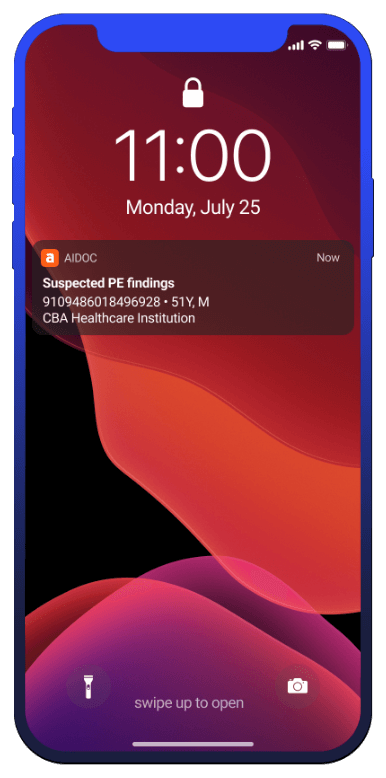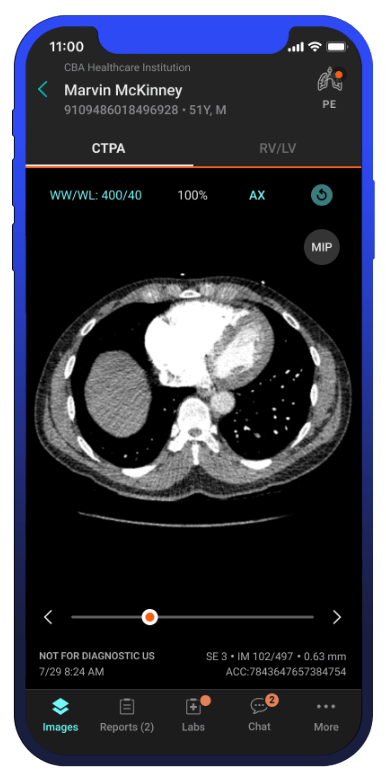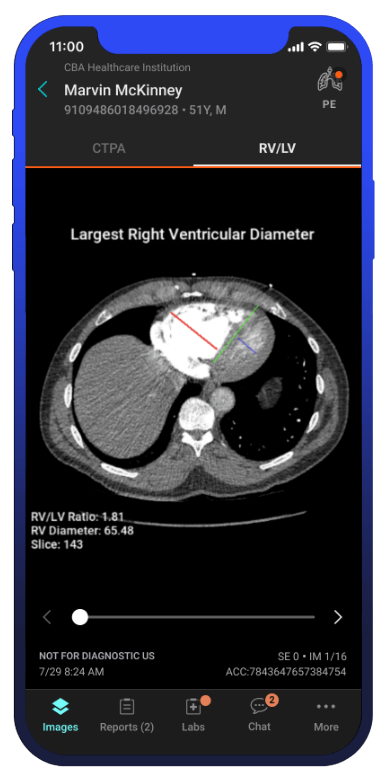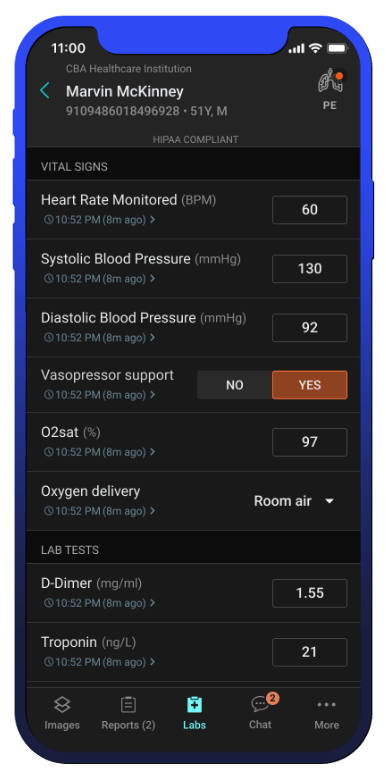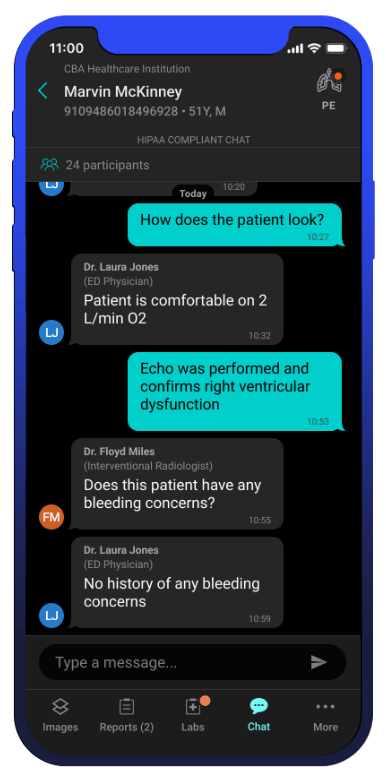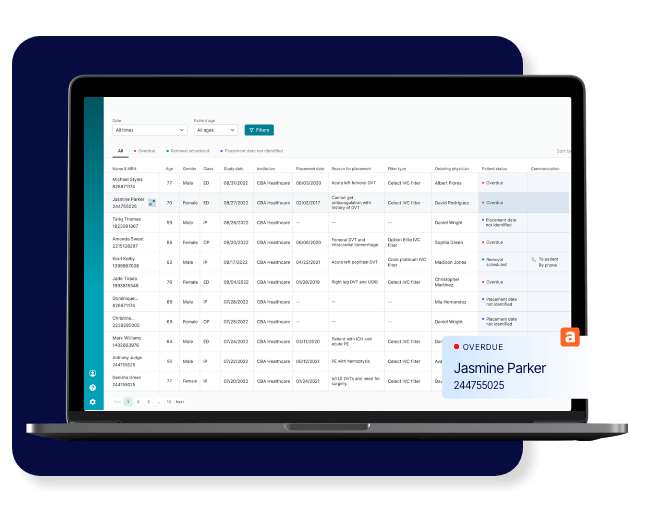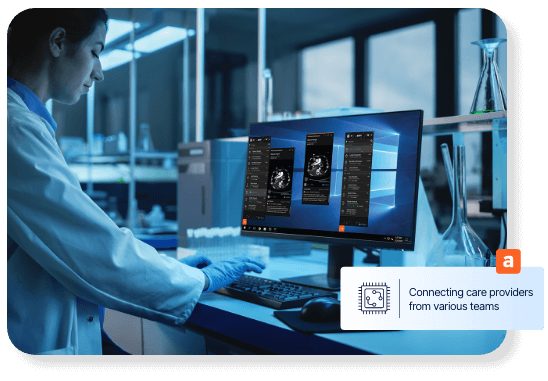THE ONLY COMPLETE AI SOLUTION FOR VENOUS THROMBOEMBOLISM
Improve time-to-treatment and cross-department collaboration while realizing incremental revenue with the only VTE solution that allows you to manage the full spectrum of the disease.
With approximately 900,000 cases diagnosed in the United States each year, venous thromboembolism (VTE) is a common yet underdiagnosed disease that can overburden health systems due to suboptimal outcomes, including low survival rates, long-term complications and recurrence.1, 2
Artificial intelligence has the potential to transform the way VTE care is provided, helping clinicians to quickly coordinate care, accelerate clinical decision making and manage long-term patient follow-up adherence.
THE BENEFITS OF AN AI-DRIVEN VTE WORKFLOW
Always On AI
Image and report-based AI runs in the background to opportunistically identify potential cases which may require PERT activation, IVC filter removal or a proximal DVT consultation
Risk Stratification
Remove variability and automate risk stratification with user-set RV/LV ratios
Care Coordination
Notification and activation of suspected VTE cases tailored to facility workflows
Follow-Up
Longitudinally manage chronic VTE pathology over time and opportunistically identify potential IVC filter retrieval procedures with a text-based AI solution


